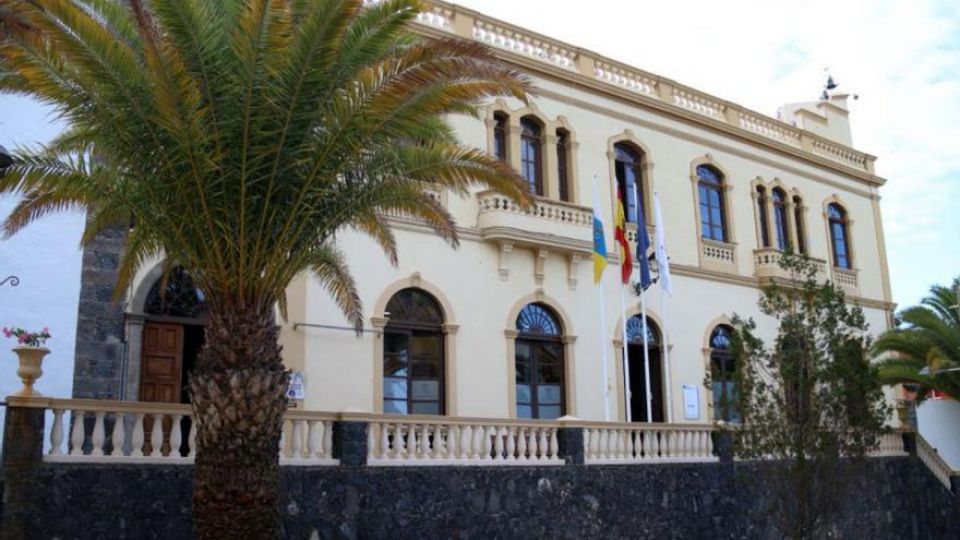
Adeje Council, following the recommendations made by the regional government’s department of health, in view of the appearance of microalgae in some areas of the coast and bathing areas of the municipality, recommends abstaining from bathing and avoiding contact with these elements in the water and with residue that may appear on the beach due to the effects of the tides.
The presence of these algae, which have a similar colouring to yellow sand, in some areas of our coastline, have also been sighted in other coastal areas of the island, are known as blooms of microalgae, which sometimes reach swimming zones, without having caused any significant damage so far.
Taking into account the information provided by the regional department of health, Adeje council wishes to inform the public that massive blooms of microalgae are natural phenomena that occur periodically as a result of various biological, environmental and climatological factors. High water temperatures, certain winds and currents, as well as the arrival of dust from the Sahara (calimas), are conditions that can favour the appearance of these phenomena, which generally occur simultaneously in different locations and off different islands of the archipelago.
Most microalgae are harmless, but some can produce toxins with varying health effects, either by contact, by ingesting the water containing them, or by inhaling the air droplets caused by the waves.
Recommendations and protective measures
Adeje council is echoing the recommendations of the regional department of health, including:
Refrain from swimming in the affected area and avoid contact with the material deposited on the sand.
Avoid being downwind to reduce the possible inhalation of airborne droplets on the shore.
For water sports or any other activity involving immersion, wear neoprene clothing that prevents water contact with the skin and has tight-fitting openings to prevent water entering the suit, as trapping microalgae between the skin and the garment increases contact time and effects.
After contact with a 'microalgae' bloom, it is necessary to shower or rinse thoroughly to remove any remaining microalgae on the skin.
Wash and dry any clothing or material that has come into contact with the bloom.
Ideally don’t organise recreational or sporting activities on beaches affected by these episodes.
If any health effects are observed after exposure to a bloom, seek medical advice.
Identification of massive blooms of microalgae
The presence of massive blooms of microalgae on beaches is easily identified and has the following characteristics:
Abnormal colouring of the water with patches of varying intensity and colour (orange, brown, brown, brown, bluish green or whitish) and loss of transparency.
Presence of "creams", lumps or spots on the surface of the water, of varying colour and intensity, and with a somewhat viscous, oily or sawdust-like appearance.
As the microalgae decomposes, an unpleasant odour of varying intensity may be noted.
Bathing water analysis
The Municipal Laboratory of Adeje, in collaboration with the regional department of health, regularly analyses the quality of the bathing water along the coast of Adeje.
The occurrence of these massive blooms of microalgae is unpredictable, so it is advisable to follow the instructions of the lifeguards and local police on duty at the beaches and swimming areas, and to respect barriers, fences, and warning signs.
Finally, Adeje council wishes to inform the public that the regional department of health has issued a warning to all the boroughs of the archipelago regarding the massive growth of microalgae in all the bathing areas of the Canary Islands.
More information (in Spanish) here:
Health Surveillance Programme for Bathing Water Zones in the Canary Islands: https://www3.gobiernodecanarias.org/sanidad/scs/contenidoGenerico.jsp?idCarpeta=334ec330-a2f2-11e0-9610-f1717f4d08a3&idDocument=c82f91fc-dfed-11e2-8241-7543da9dbb8a
Information on the health surveillance programme for bathing areas, the health map of beaches, jellyfish, microalgae: https://www3.gobiernodecanarias.org/sanidad/scs/listaImagenes.jsp?idDocument=6f8352f5-a35e-11e7-8b56-bf65dd086cd4&idCarpeta=334ec330-a2f2-11e0-9610-f1717f4d08a3
National Bathing Water Information System: https://nayadeciudadano.sanidad.gob.es/Splayas/ciudadano/indexCiudadanoAction.do